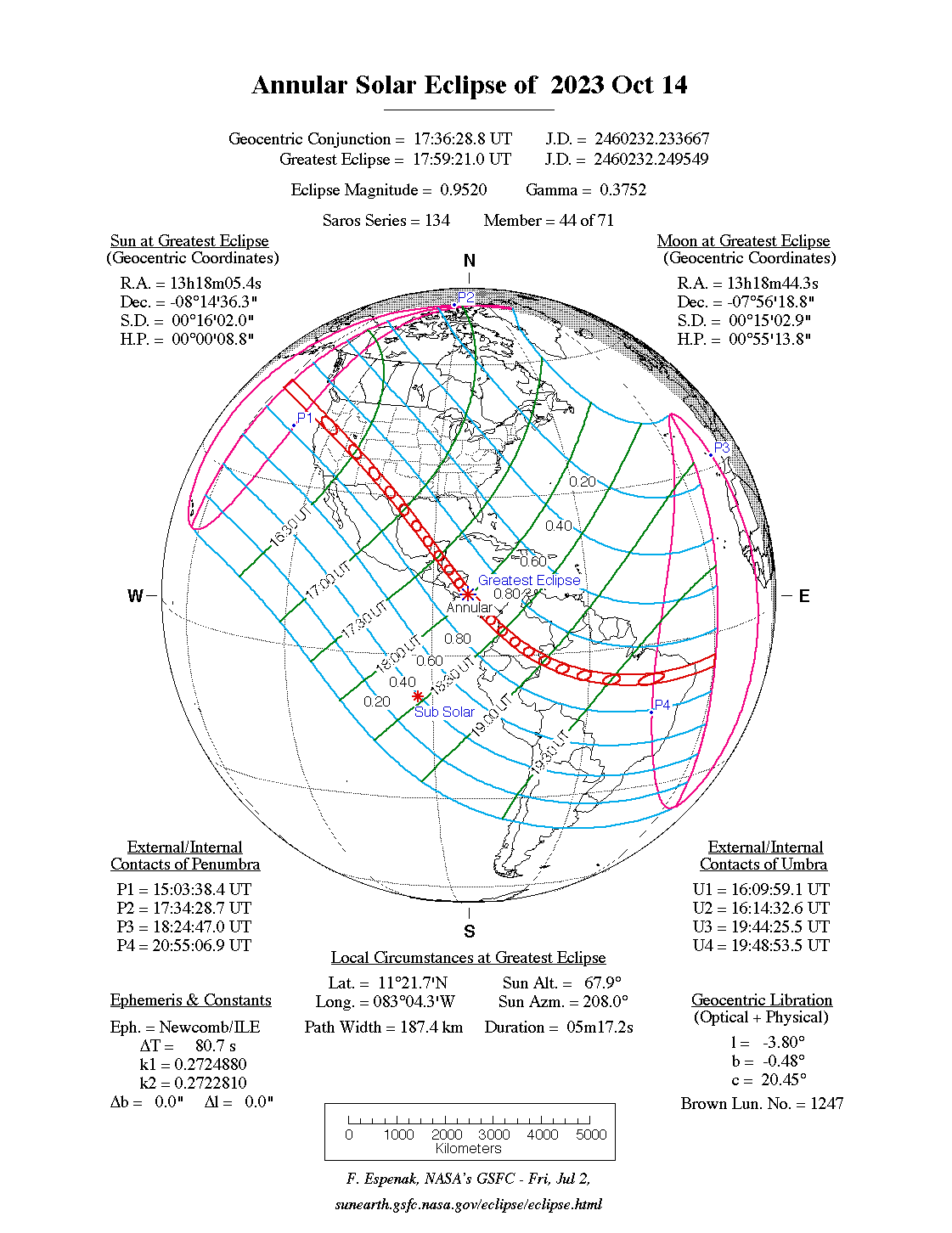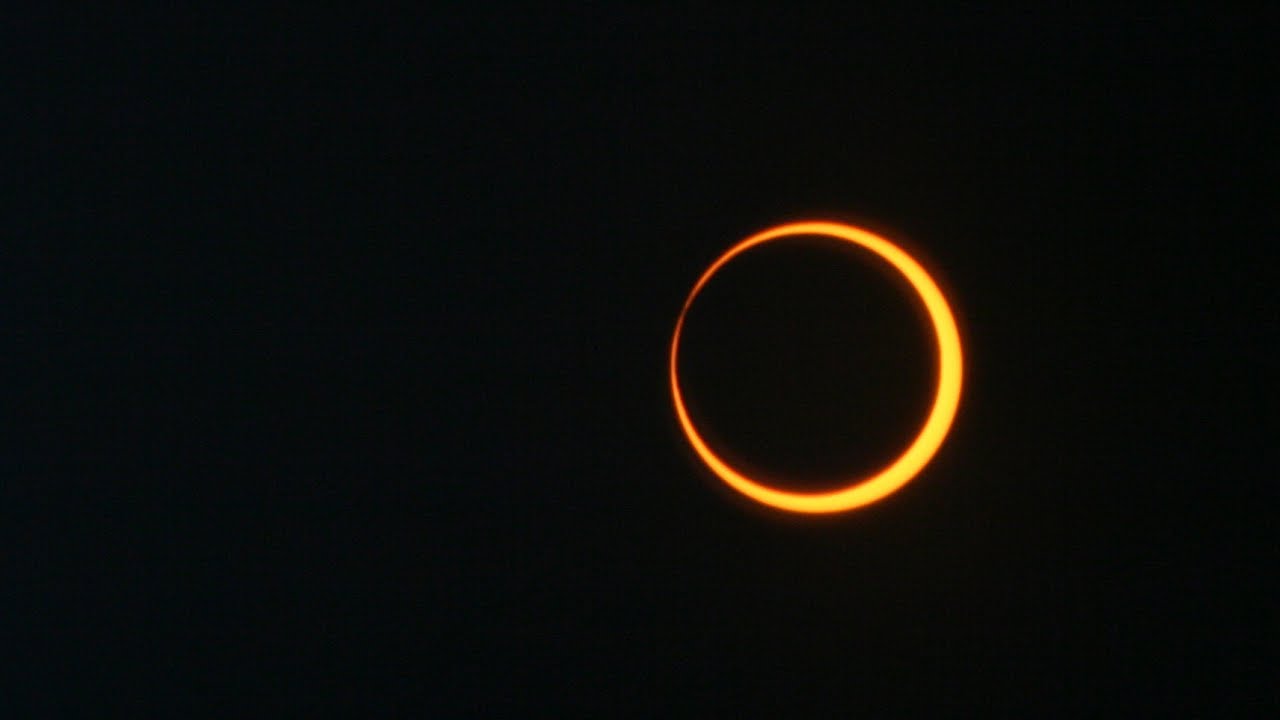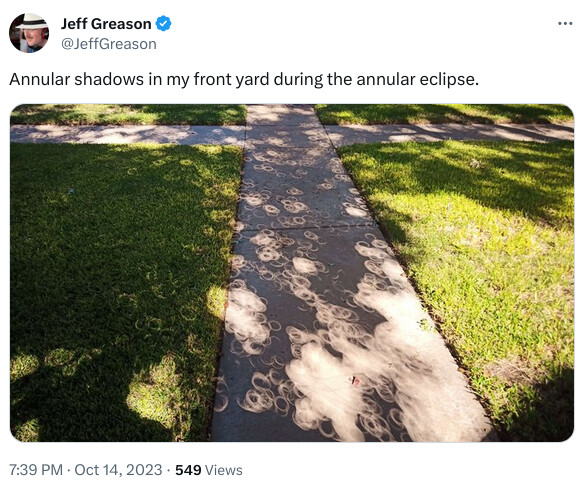On 2023-10-14 an annular solar eclipse will be visible in North, Central, and South America. An annular eclipse occurs when the Moon passes in front of (or transits) the Sun at a time when, due to the position of the Earth and Moon in their elliptical orbits, the apparent size of the Moon is smaller than that of the Sun, so even when the Moon is directly in front of the Sun, it doesn’t cover the Sun’s disc, allowing sunlight to pass around its limb. See my 2004 article, “Moon near Perigee, Earth near Aphelion and Moon near Apogee, Earth near Perihelion”, for details on how the appearance of the Sun and Moon vary with their distance from Earth and how this affects solar eclipses.
The eclipse track is plotted by the pair of red lines in the map above, extending from Oregon in the U.S., passing right along the land mass of Central America, and departing South America at the east coast of Brazil. Observers outside the zone of annularity will see a partial eclipse where the Moon does not pass directly in front of the Sun. Only extreme western Alaska and the southern parts of Chile and Argentina will not see a partial eclipse.
Here is an animation of the progression of the eclipse as seen from the Sun. The large black circle shows the region in which a partial eclipse is visible and the small black disc the area of annularity.
Click to play animation (too large to embed here)
Fred Espenak’s Solar Eclipse Circumstances Calculator will prepare custom predictions for the eclipse at any specified location.
An annular eclipse must be viewed or photographed with a safe solar filter rated for observing the uneclipsed Sun. Unlike a total eclipse, where the Sun’s photosphere is entirely obscured by the Moon, even the less than 5% of the Sun not blocked by the Moon can cause damage to the eye if observed through magnifying optics.
A fun experiment to perform during a partial or annular eclipse is to set up a camera on a tripod with a fixed aperture and shutter speed to take pictures of the landscape every, say, five minutes. After the eclipse, you can assemble these into a time-lapse movie that shows how the light darkens as the Moon obscures the Sun. This isn’t very apparent to the eye, which has a logarithmic response to light and automatically adjusts based on its intensity, but is striking when captured by a camera with linear sensitivity.
If you’re in a region where the eclipse is not visible or are clouded out, you can watch a NASA Webcast of the eclipse from the following stream.
Annular solar eclipses are of no scientific interest, but are spectacles worth seeing if you have the opportunity.


